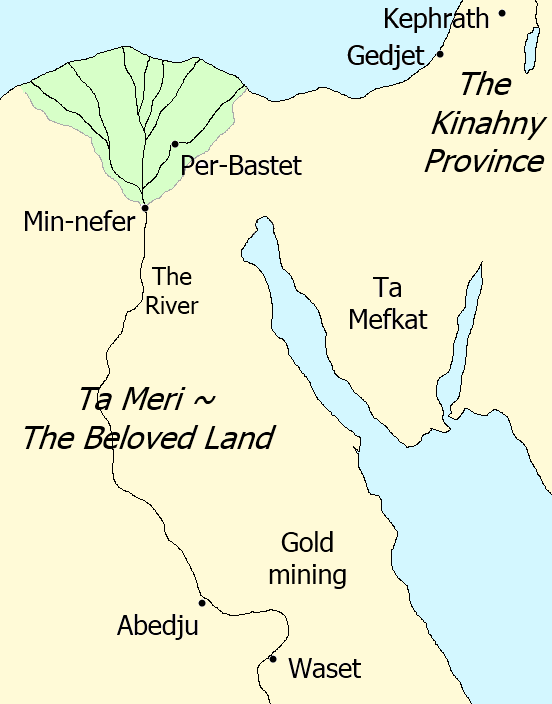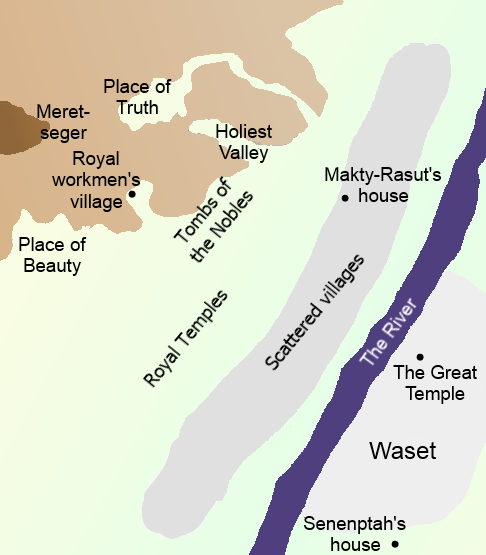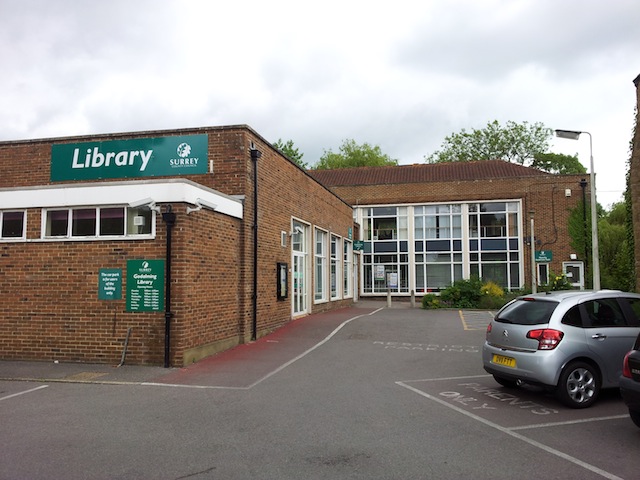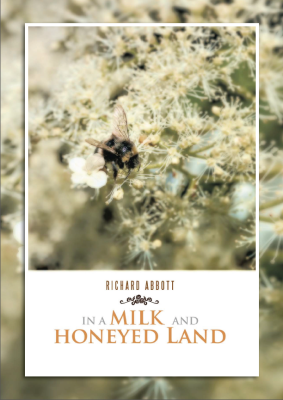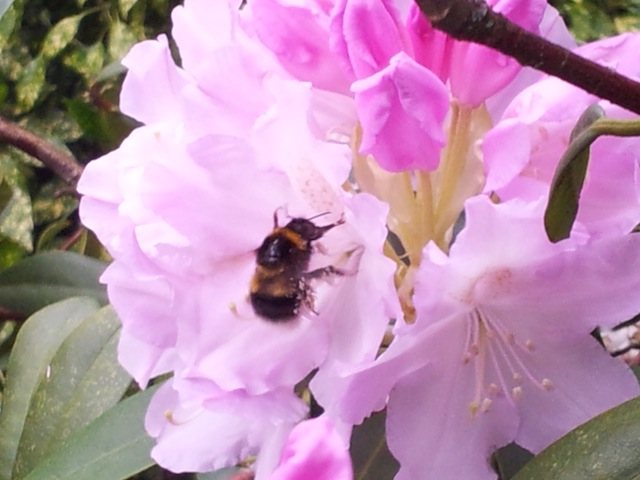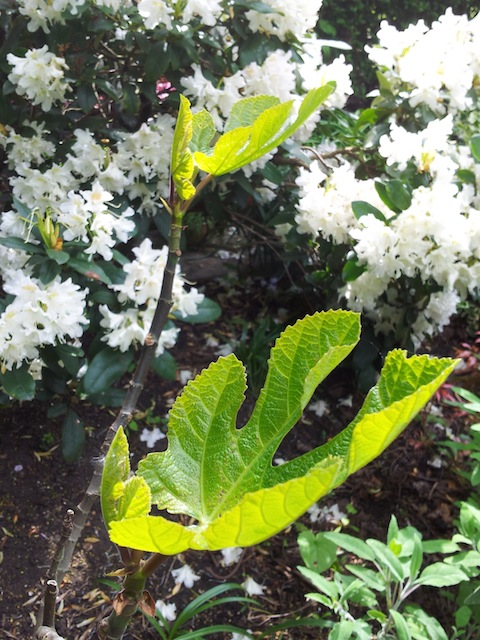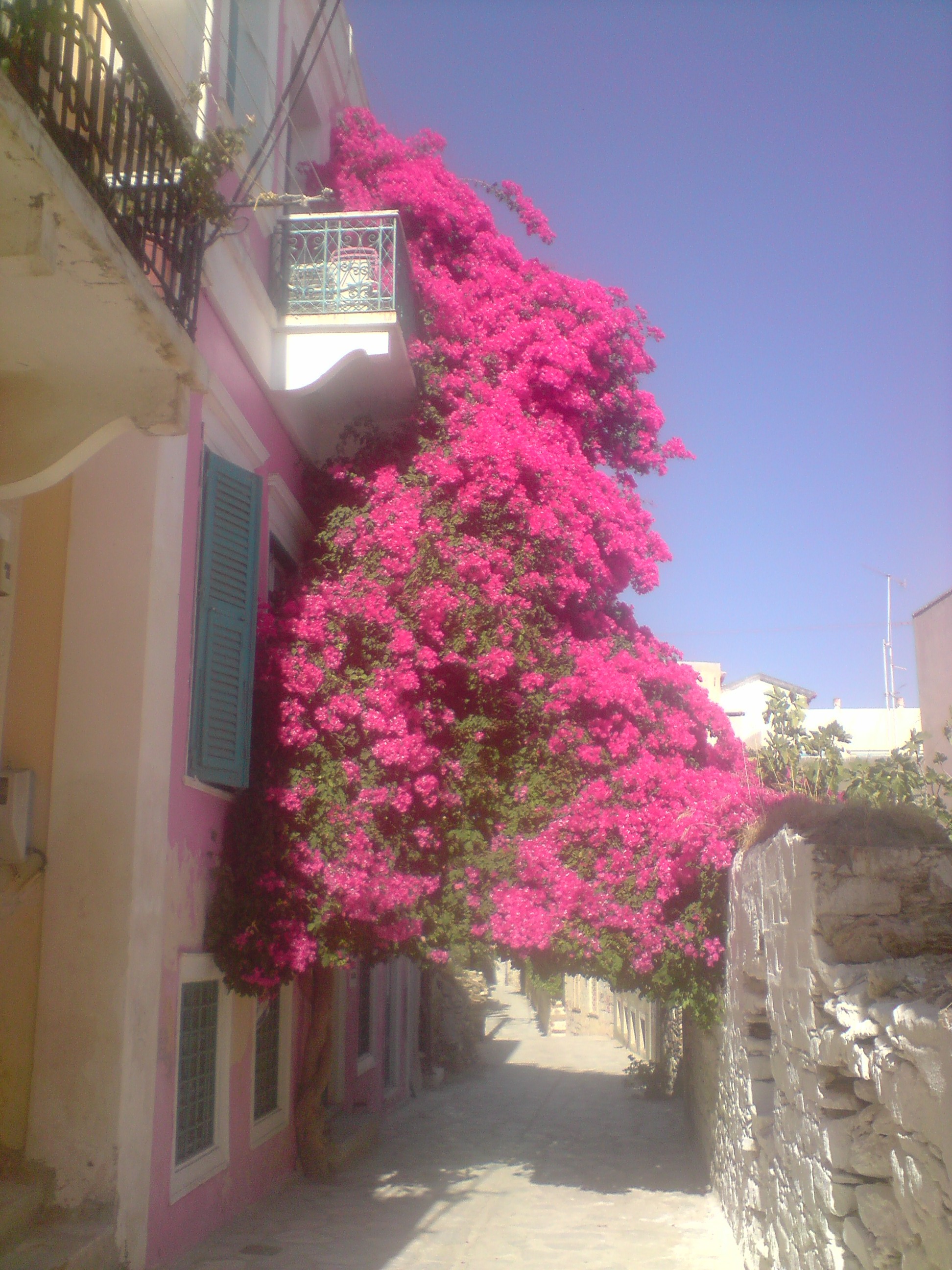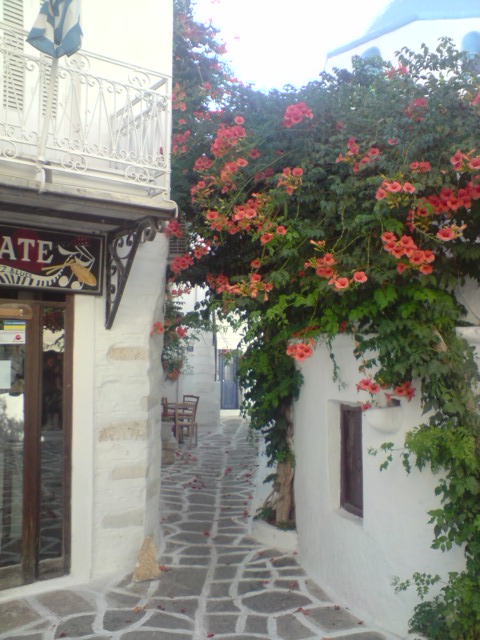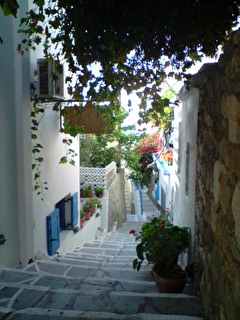Something of a departure for me here – Jessica Knauss invited me to participate in the Tasty Summer Reads blog hop, so here I am thinking about blending food and historical fiction.
Here is the blog hop general blurb:
Welcome to the Tasty Summer Reads Blog Hop! Each participant invites a number of others to answer five questions about a recent or forthcoming release, and a recipe that fits with it. Links to the participants I have invited may be found in a while, just above the extract and recipe. Their contributions should be in place soon after this, so check out their blogs over the next few days.
Now, in one way the subject matter is pretty easy for me – it became something of a standing joke as family members were reading the later drafts of In a Milk and Honeyed Land that the inhabitants of Kephrath did a lot of eating.
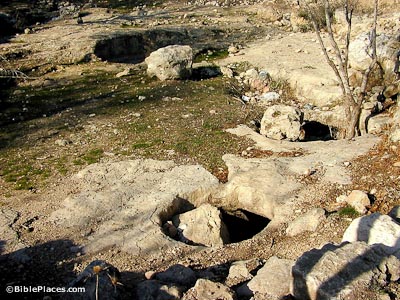
But actually we know from archaeological excavations in Gibeon (which I call Giybon) that they did indeed produce a great deal of wine. Here are some of the wine-making cellars at Gibeon, which date from around c.750BC (picture hosted at the BiblePlaces.com web site)
This of course is about 500 years after Damariel and his generation, but it seems altogether likely to me that the wine industry flourished those few centuries earlier at the end of the Late Bronze Age.
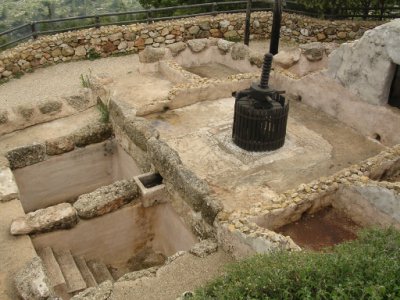
Wine-making continues there today – I took this picture a few years ago at a modern kibbutz pretty much on the site of biblical Kiriath Jearim (Jarrar’s Town or Woodlands of the stories). Here we have a modern mechanical wine press and the storage cisterns linked to it. There were also vine trellises, and flat areas for manual grape treading, but these were always full of people and I did not take a clean picture of these.
I use food in books a lot as a signal of social connection or disjunction. As an example, I have included an extract below from In a Milk and Honeyed Land. Here, and also in the (work-in-progress) Scenes from a Life, food is sometimes shared across social classes, and questions of who is allowed to eat what and when are used a signal of social division or unity.
Meanwhile, part of the deal with the blog hop is that I have to answer a few standard questions posed by the originator…
1) When writing are you a snacker? If so sweet or salty?
No, I tend to get lost in the process and forget about food for a while. Even when writing about food I don’t get tempted to wander downstairs and eat something. Right now I am overdue for lunch… When I do get to eat then my preference is for something constructed rather than just grabbed from a packet. I would be very much at home with the kind of eastern Mediterranean diet my protagonists enjoy!
2) Are you an outliner or someone who writes by the seat of their pants? And are they real pants or jammies?
Outline, definitely. Most definitely. The structure of writing is really important to me, both at the large scale of how the whole narrative is shaped and the details of each scene. If I do write a chunk all in a spontaneous rush I edit it a lot to make sure it actually does what I want it to.
3) When cooking, do you follow a recipe or do you wing it?
Same answer, really – I have to be pretty organised here so as things turn out well rather than badly. On the other hand, I get very impatient with long or elaborate recipes – what I am looking for is the right proportions of things to put together (ironically, the recipe I have added is very casual about such things).
4) What is next for you after this book?
Hm, well, just now my main target is finishing Scenes from a Life in 2013. I don’t yet have any specific thoughts for another novel, but there are some short stories that I would like to write. However, I completely expect at some stage to find another novel set in and around Kephrath in roughly the same era – I love exploring that setting and there is no shortage of material. I have alluded in a few places to a migration down from the north which Damariel’s ancestors carried out (there is a small amount of vague and inconclusive archeological evidence to support such an idea) and it might be good to look into that some more. I have a feeling that is short-story length rather than novel-length, though. More likely for a novel would be to move a few years ahead again. In terms of the Hebrew Bible, we move increasingly into the Judges era, which was a very turbulent and fascinating time, not at all like the relatively placid times before.
5) Last question…on a level of one being slightly naughty and ten being whoo hoo steamy, how would you rate your book?
Well, like other bloggers in this hop I find that a little hard to answer. Definitely not at the “whoo hoo steamy” end of the spectrum, but I wouldn’t use the word “naughty” either. My characters are very serious about love and sex, and quite involved with it, but as a normal and perfectly acceptable dimension of relationship. Their intimacies do (occasionally) find their way onto the pages, but anyone on a search for erotica would probably be disappointed! Canaanite religion was more overtly sexualised than perhaps the average European is accustomed to, but I have deliberately avoided the rather dull, and in my view bigoted, trope of portraying Canaanites as engaging in brutal and depraved sex and sacrifice at every opportunity. In In a Milk and Honeyed Land, sex can be delightful, abusive or just everyday, but it is not institutionally depraved.
I have invited the following people to participate in the blog hop, though time and holiday constraints mean that their contributions may well be a little delayed. If you find that they have not yet sorted out a post, please be patient and revisit in a while.
===== An extract from In a Milk and Honeyed Land ======
Damariel, a village priest, has just met Nepheret, who at the time is a slave in Gedjet (modern Gaza). Her master has ordered her to provide food and entertainment for him, and she has just finished her first song. Damariel is uncomfortable at the one-sided nature of the relationship, as his village culture is unused to slaves.
=====================================================
“Nepheret, look, there’s far too much food just for me. Here’s a thought. When you sing, I will eat and drink something, and when I sing, you eat and drink.”
She thought about it for a moment, and looked again, hesitantly, at the door before nodding. “But I must sing again first, then you.”
Damariel nodded, and bowed with his hands held together as he might after agreeing a transaction with a trader in his own town, before lifting the cloth away from over the food. The first thing that caught his eye were some figs, each wrapped in a thin strip of some meat and stuffed with cheese. He put two onto a plate, picked up his beer, and ate and drank as she sang another song, this time without using any of the instruments. When she stopped he got up and went to stand where she had been. She moved to stand behind the table, but did not touch anything on it. He sighed, put one of the fig parcels on another plate and pushed it and the second beer towards her.
“How can I sing if you won’t sit down?”
She perched slightly awkwardly on the stool, and picked up the food.
“This is a song we sing when the olive harvest is in, when the first wine is just ready, and before we start digging the ground for the vegetables, the beans and so on.”
She listened acutely, the fingers on her left hand tapping against the table with the cadence of his voice as he recited the lines. When he stopped he came to the table and picked up his beaker of beer. They both drank. He noticed that she was still looking thoughtful and, more surprisingly, was still sitting.
“Sir, look, you make your songs differently.” He looked quizzically at her. “I don’t mean the words, of course yours are Kinahny, mine are Mitsriy. But that is not what I mean. But when you have two lines together, they are the same length.” She held her hands a short distance apart, fingers pointing up, palms parallel with each other. “No difference. But listen.”
She repeated two lines of the poem to Tefnut and spread her hands open so the fingers were further apart than her wrists. “You see, sir, they are long then short, not equal.”
He put the beaker down, intrigued.
“But why? Why not the same.”
“Oh, sir, but the lines are a heartbeat, there is a long one and a short one that join to make us live. Or they are the red hills either side of the black land, one higher and one lower, that look at each other across the great River. Or they are the two parts of the land, one long and one broad, that join at Men-Nefer. Or they are a man and a woman, they are a different shape and join together in union. Why ever make them the same?”
=====================================================
Why indeed? In a Milk and Honeyed Land does not delve too far into the great adventure of ancient poetry, but differences in music and song can separate cultures or bring them together, just as food can.
The recipe:
Find some fresh figs, one per person unless you are very hungry. Here in the UK they are usually called green figs to distinguish them from the dried variety which will not work so well. Stand in some water, bring to the boil and simmer for a short time to soften the middles. Let them cool.
Meanwhile, pick the cold meat of your choice – something that is thin and wraps well is ideal, but this still gives lots of choice. Get a small tub of soft cheese. Cut off the top of the fig, scoop out the middle (carefully – the skins are not that strong) and squadge it together with the cheese. Add some herbs of your choice. Put the mixture back in the fig cases – you’ll almost certainly have some mixture left over to serve alongside. Wrap a strip of the meat around each fig, placing them in turn in a baking tray so that the ends of the meat strips are held in place. Bake in a moderate over until they are hot – they don’t really need cooking as such, this stage is just to get the flavours mixed. Eat while hot as a starter, snack or as part of a mezze dish.
(Family debts happily acknowledged for the original recipe)
A final picture, with an Egyptian theme – here is a wine-making scene from the tomb of Nakht, c. 1400BC (picture hosted on Osiris.net):

Here is the list of people who have participated to date, so far as I am aware:





 I would recommend this article to others and do not disagree with some of the positions Brian is presenting. In particular (perhaps to reassure him and others) I completely agree with him that sacred traditions in general, and the Hebrew Bible in particular, contain mythic and spiritual elements and are best not absorbed simplistically or with a naive literalism. But… I think Brian significantly over-stated some issues of historical evidence, and as a result was rather too dismissive of the possibility of a historical root event to the Exodus tradition. I did put this into a response to the blog itself, but I suspect its excessive length tripped some kind of cut-off! The comment never made it to the blog.
I would recommend this article to others and do not disagree with some of the positions Brian is presenting. In particular (perhaps to reassure him and others) I completely agree with him that sacred traditions in general, and the Hebrew Bible in particular, contain mythic and spiritual elements and are best not absorbed simplistically or with a naive literalism. But… I think Brian significantly over-stated some issues of historical evidence, and as a result was rather too dismissive of the possibility of a historical root event to the Exodus tradition. I did put this into a response to the blog itself, but I suspect its excessive length tripped some kind of cut-off! The comment never made it to the blog.
